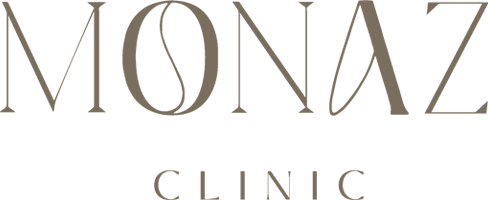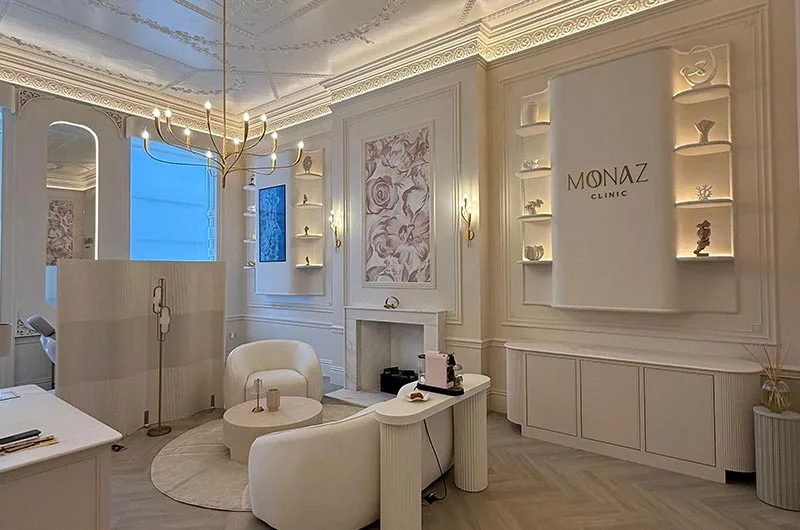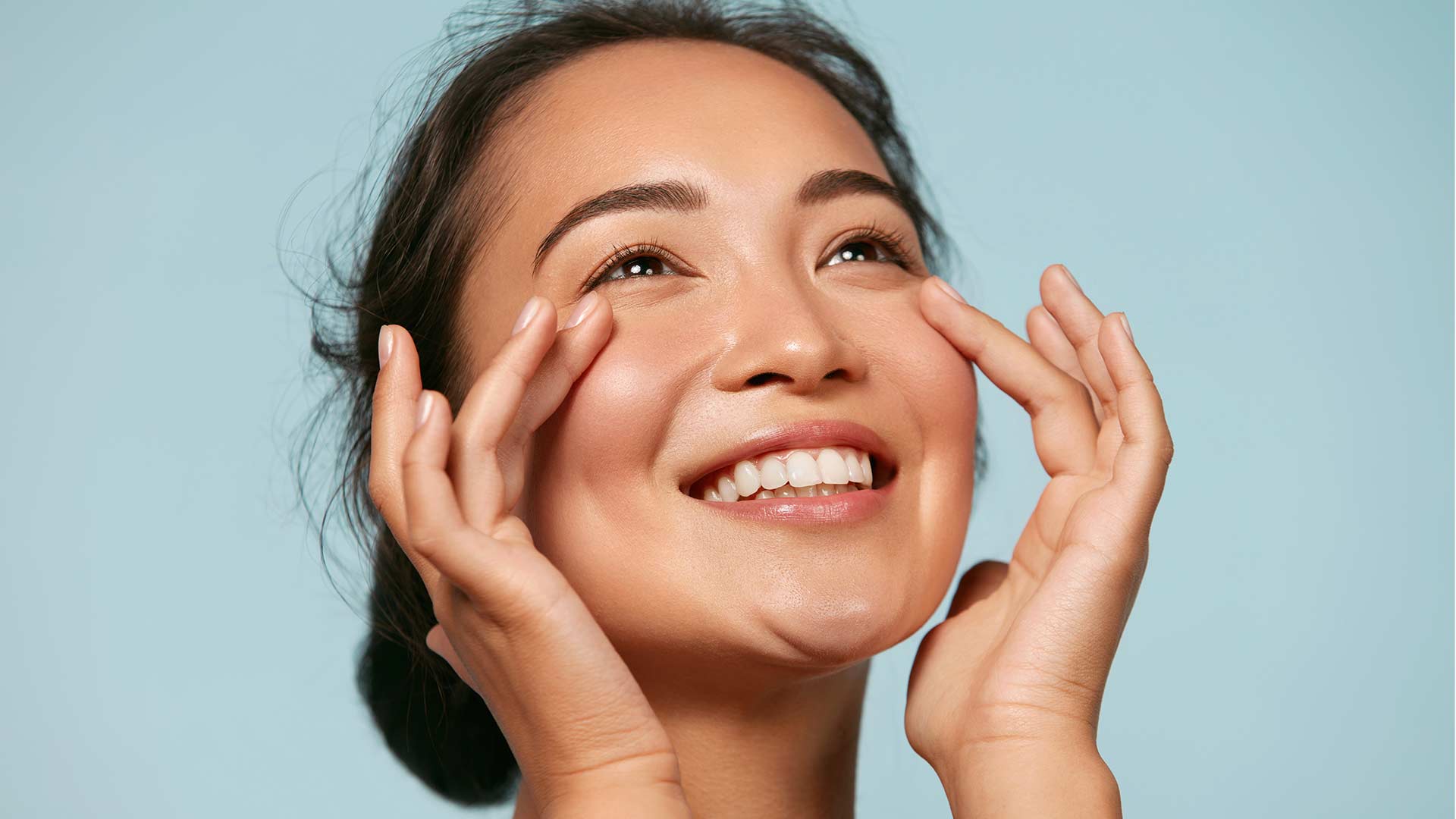Learn how to plan aesthetic treatments step-by-step for stunning results. Ideal for ladies seeking facial aesthetics in London and Harley Street.
Planning aesthetic treatments can feel daunting when every option promises miraculous results. Yet fewer than 30 percent of people actually achieve their intended outcome without detailed preparation and guidance. The real transformation begins before any treatment at all, with a clear-eyed assessment of your needs and a surprising focus on personal reflection over quick fixes.
Table of Contents
- Step 1: Assess Your Aesthetic Goals And Needs
- Step 2: Research Available Treatment Options
- Step 3: Identify Qualified Practitioners In Your Area
- Step 4: Schedule Consultations For Personalised Advice
- Step 5: Create A Treatment Plan With Chosen Practitioner
- Step 6: Review And Monitor Results After Treatments
Quick Summary
| Key Point | Explanation |
|---|---|
| 1. Conduct a thorough self-assessment | Evaluate your skin condition and aesthetic goals to inform treatment planning effectively. |
| 2. Research treatment options comprehensively | Understand various aesthetic treatments to find those that match your specific concerns and preferences. |
| 3. Choose qualified practitioners carefully | Select professionals based on credentials, experience, and patient-focused results to ensure safety and satisfaction. |
| 4. Schedule detailed consultations | Use these meetings to discuss your assessments and potential treatments, ensuring clear communication with your practitioner. |
| 5. Monitor results post-treatment | Keep track of changes and recovery to ensure long-term satisfaction and effective management of your aesthetic goals. |
Step 1: Assess Your Aesthetic Goals and Needs
Planning aesthetic treatments requires a strategic and personalised approach that begins with a thorough self-assessment. Understanding your unique skin concerns, desired outcomes, and individual aesthetic vision forms the critical foundation for successful treatment planning. Your initial assessment will determine the most effective pathway to achieving radiant, natural-looking results.
Begin by conducting an honest and comprehensive evaluation of your current skin condition and aesthetic objectives. Consider both your physical characteristics and emotional motivations. What specific features would you like to enhance or address? Are you seeking subtle refinement or more pronounced transformation? Some women focus on minimising fine lines, while others prioritise evening skin tone or restoring youthful volume.
A comprehensive self-assessment involves multiple dimensions. Examine your skin closely in natural lighting, noting texture, pigmentation variations, areas of concern like uneven tone or emerging wrinkles. Take high-quality, well-lit photographs from multiple angles to provide an objective baseline. Document your observations with detail and clarity. This visual record becomes an invaluable reference point when consulting with aesthetic professionals.
Your emotional readiness is equally important. Reflect on your motivations and expectations. Are your aesthetic goals rooted in personal satisfaction or external pressures? Read our guide on choosing facial aesthetic treatments to gain deeper insights into making informed decisions that align with your authentic self.
Consider creating a detailed personal assessment worksheet that captures key elements:
- Current skin condition and specific concerns
- Desired aesthetic outcomes
- Realistic expectations and timeline
- Personal comfort level with potential treatments
Remember that successful aesthetic planning is a collaborative journey between you and your chosen medical professional. Your self-assessment provides critical information but should be viewed as a starting point for professional consultation, not a definitive treatment plan. A medically qualified practitioner will help refine your initial insights, offer professional perspectives, and develop a customised approach tailored precisely to your unique needs.
Step 2: Research Available Treatment Options
After completing your initial self-assessment, the next critical phase in planning aesthetic treatments involves comprehensive and strategic research. Not all treatments are created equal, and understanding the nuanced landscape of aesthetic options will empower you to make informed decisions.
Begin your research by exploring treatments specifically aligned with the concerns and goals identified in your initial assessment. Modern aesthetic medicine offers a remarkable spectrum of non-surgical interventions designed to address various skin conditions and aesthetic objectives. From advanced facial rejuvenation techniques to targeted skin refinement procedures, the range of available options can seem overwhelming without a structured approach.
Qualified medical professionals recommend conducting research through multiple credible channels. Consulting professional medical websites, reading peer-reviewed journals, and attending informational seminars can provide robust insights. Learn more about aesthetic treatment fundamentals to build a solid understanding of potential interventions. Pay particular attention to treatment descriptions, expected outcomes, potential risks, and recovery processes.
Navigate your research with a critical and discerning mindset. Look beyond marketing materials and seek objective, scientifically validated information. Consider factors such as treatment duration, potential side effects, long-term results, and compatibility with your specific skin type. Understanding the technical aspects of each procedure will help you develop realistic expectations and make more confident decisions.
Compile a comprehensive comparison of potential treatments, noting key characteristics:
- Procedure duration and complexity
- Expected recovery time
- Potential risks and side effects
- Estimated cost range
- Typical results and longevity
Remember that while online research provides valuable preliminary information, it cannot replace personalised professional consultation. Each individual’s skin is unique, and what works effectively for one person may not produce identical results for another. Your research should be viewed as preparation for a detailed discussion with a medically qualified aesthetic practitioner who can provide expert guidance tailored to your specific needs and goals.
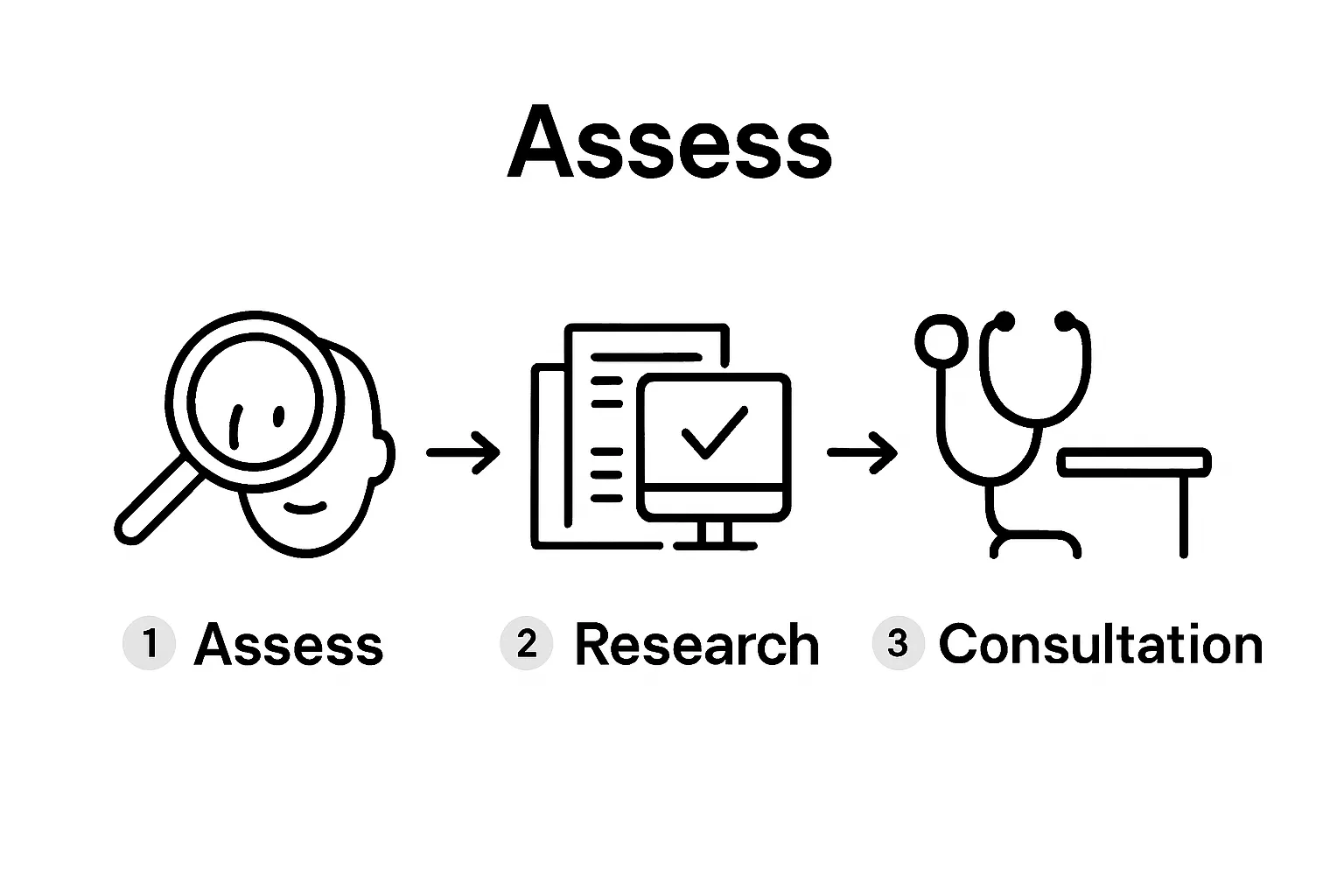
Step 3: Identify Qualified Practitioners in Your Area
Selecting the right aesthetic practitioner represents a pivotal moment in your aesthetic treatment journey. The expertise, qualifications, and professional approach of your chosen medical professional will fundamentally determine the quality and safety of your aesthetic experience.
Begin your practitioner search by establishing rigorous selection criteria. Seek professionals with verifiable medical credentials, specialised training in aesthetic medicine, and a proven track record of delivering natural, patient-focused results. Look for practitioners registered with professional bodies and holding current medical licenses. Aesthetic treatments require precision, artistic vision, and extensive medical knowledge, making credentials more than just paperwork.
Geographic proximity matters, but should not compromise quality. While convenience is appealing, prioritise practitioners who demonstrate exceptional skill and patient care over those merely closest to your location. Explore our comprehensive guide on aesthetic consultation checklists to understand what distinguishes an outstanding aesthetic professional.
Your research should extend beyond online profiles. Request detailed consultations that allow face-to-face interactions, providing opportunities to assess the practitioner’s communication style, professional demeanour, and understanding of your specific aesthetic goals. During these consultations, observe how thoroughly they examine your initial assessment, listen to your concerns, and propose personalised treatment strategies.
Key verification points for identifying a qualified practitioner include:
- Current medical registration status
- Specialised aesthetic medicine certifications
- Professional insurance coverage
- Patient testimonials and before-and-after portfolios
- Demonstrated commitment to ongoing professional development
Remember that choosing an aesthetic practitioner is a deeply personal decision. Trust your instincts and select a professional who not only demonstrates medical excellence but also makes you feel heard, respected, and genuinely understood. A truly exceptional practitioner will view your aesthetic journey as a collaborative partnership, prioritising your comfort, safety, and desired outcomes throughout the entire process.
The following checklist summarises critical verification points and preparatory actions when selecting a qualified aesthetic practitioner.
| Verification Step | What to Check | Why It Matters |
|---|---|---|
| Medical registration status | Confirm practitioner is currently registered with a recognised medical authority | Ensures legal compliance and safety |
| Specialised aesthetic certifications | Check for advanced aesthetic medicine training or memberships | Indicates relevant expertise and up-to-date training |
| Professional insurance coverage | Verify practitioner holds active professional indemnity insurance | Protects you in case of procedural complications |
| Patient testimonials and portfolios | Review before-and-after images and patient reviews | Assesses practitioner’s results and patient satisfaction |
| Ongoing professional development | Ask about recent courses or conferences attended | Demonstrates commitment to modern, evidence-based approaches |
Step 4: Schedule Consultations for Personalised Advice
Scheduling professional consultations marks a transformative stage in your aesthetic treatment planning. This critical step bridges the gap between your personal research and a tailored treatment strategy that precisely addresses your unique aesthetic goals.
Initiate the consultation process by preparing comprehensive documentation of your skin assessment, research findings, and specific treatment objectives. Professional practitioners appreciate patients who arrive informed and articulate about their aesthetic aspirations. Compile your medical history, current skincare routine, any existing health conditions, and a detailed list of questions or concerns you wish to discuss during the consultation.
When booking consultations, prioritise clinics and practitioners who offer comprehensive, pressure-free initial assessments. Explore our guide to building a personalised skincare routine to understand the importance of tailored professional advice. According to the Royal College of Surgeons, a high-quality consultation should comprehensively cover potential treatment options, associated risks, expected outcomes, and alternative approaches.
During consultations, actively engage with your practitioner. A meaningful consultation is a collaborative dialogue, not a passive experience. Present your research, share your aesthetic vision, and listen carefully to professional recommendations. Pay attention to how thoroughly the practitioner examines your skin, discusses potential treatments, and addresses your specific concerns.
Critical elements to address during your consultation include:
- Detailed skin analysis and current condition assessment
- Recommended treatment options matching your goals
- Potential risks and expected recovery processes
- Treatment costs and available financing options
- Long-term maintenance and follow-up care recommendations
A successful consultation concludes with a clear, personalised treatment plan that aligns with your aesthetic objectives, budget, and medical considerations. Trust your instincts if a practitioner seems rushed, dismissive, or unable to provide detailed, compassionate guidance. The right aesthetic professional will make you feel heard, respected, and confident in the proposed treatment strategy.
Here is an overview of the main steps involved in planning aesthetic treatments, including expected focus and key outcomes for each stage.
| Step | Main Focus | Key Outcome |
|---|---|---|
| 1. Self-Assessment | Evaluate skin and aesthetic goals | Baseline understanding of personal needs |
| 2. Research Treatments | Explore available options and effectiveness | Informed list of suitable interventions |
| 3. Identify Practitioners | Verify qualifications and experience | Selection of trusted professionals |
| 4. Professional Consultations | Discuss goals and receive expert guidance | Personalised recommendations and plan |
| 5. Treatment Planning | Develop structured treatment strategy | Clear roadmap for interventions and care |
| 6. Review & Monitor Results | Track changes and manage aftercare | Long-term satisfaction and adjustment as needed |
Step 5: Create a Treatment Plan with Chosen Practitioner
Creating a comprehensive treatment plan represents the strategic culmination of your aesthetic journey. This collaborative process transforms your initial vision into a structured, personalised roadmap designed to achieve your desired aesthetic outcomes with precision and care.
Approach the treatment planning phase as a true partnership between you and your chosen practitioner. Open, honest communication becomes paramount. Share your complete medical history, discuss any potential concerns, and articulate your aesthetic expectations with clarity. The most effective treatment plans emerge from transparent dialogue that considers not just your visual goals, but your overall health, lifestyle, and personal comfort.
According to the Royal College of Surgeons, a robust treatment plan should comprehensively address multiple dimensions of your aesthetic journey. This means moving beyond simple procedure selection to develop a holistic strategy that encompasses preparation, intervention, recovery, and long-term maintenance.
Your treatment plan should provide a detailed framework that outlines every aspect of your aesthetic experience. This includes precise procedural details, anticipated recovery timelines, potential side effects, and expected outcomes. A well-constructed plan acts as a roadmap, providing clarity and setting realistic expectations for your transformation.
Key components to document in your treatment plan include:
- Specific treatments and their recommended sequence
- Estimated duration of each procedure
- Anticipated recovery periods and aftercare requirements
- Potential risks and mitigation strategies
- Total financial investment and payment structure
- Follow-up consultation and assessment schedules
Remember that a truly exceptional treatment plan is flexible and adaptive. Your chosen practitioner should be willing to adjust the strategy based on your body’s response, healing process, and evolving aesthetic goals. Regular communication and periodic reassessment ensure that your treatment remains aligned with your original vision while accommodating any necessary refinements.
Step 6: Review and Monitor Results After Treatments
The final stage of your aesthetic treatment journey involves careful, systematic monitoring and evaluation of your results. This critical phase transforms your aesthetic investment into a sustainable, long-term approach to personal enhancement and skin health.
Immediately following your treatment, document your initial results with comprehensive, well-lit photographs taken from multiple angles. These visual records serve as crucial benchmarks, allowing you to track subtle changes and assess the treatment’s effectiveness over time. Maintain a detailed journal noting skin texture, tone, and any physiological responses to the procedures you have undergone.
According to the Royal College of Surgeons, patients should remain vigilant about reporting any unexpected reactions or concerns during the recovery process. Your practitioner should provide clear guidelines for post-treatment care, including specific instructions about skincare routines, potential side effects to monitor, and recommended follow-up timelines.
Establish a structured follow-up schedule with your chosen aesthetic professional. These consultations are not mere formalities but essential opportunities to assess treatment outcomes, discuss any concerns, and plan potential future interventions. A proactive approach enables swift identification and management of any unexpected developments, ensuring your aesthetic goals remain on track.
Key elements to track during your post-treatment monitoring include:
- Changes in skin texture and appearance
- Physical sensations or unexpected reactions
- Adherence to recommended aftercare protocols
- Long-term maintenance strategies
- Potential need for supplementary or complementary treatments
Remember that aesthetic treatments are dynamic processes. Your skin will continue evolving, and results may manifest gradually. Patience, consistent care, and open communication with your practitioner are fundamental to achieving and maintaining your desired aesthetic outcomes. View this monitoring phase not as a conclusion, but as an ongoing journey of personal enhancement and self-care.

Achieve Flawless Aesthetic Results with Monaz Clinic Expertise
You have just learned the essential steps to confidently plan your aesthetic treatments, from personal self-assessment to building a tailored treatment plan. Yet, navigating the world of non-surgical cosmetic solutions can feel overwhelming. Finding a trustworthy clinic and a practitioner who truly understands your needs is crucial to avoiding disappointment and achieving radiant, natural-looking results. If you are seeking reliable guidance and expert care, our dedicated resources are an ideal starting point. Learn further in our practical tips section or explore our main site to discover what sets our approach apart.
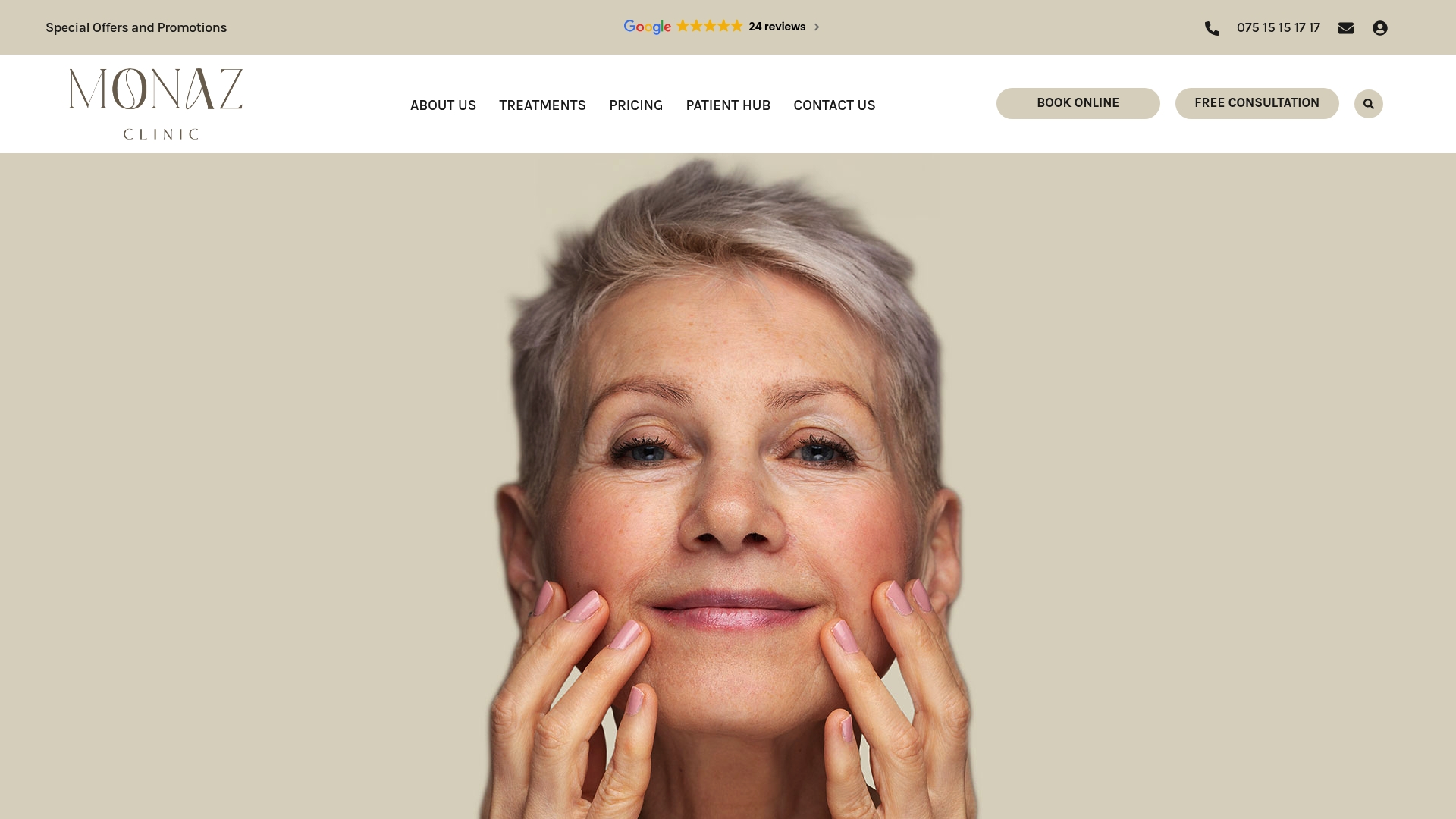
Take the next step with Monaz Clinic, where every patient receives a one-on-one consultation with fully qualified professionals. Book your complimentary consultation today and experience how our expertise on Harley Street transforms your treatment plan into personal confidence. Secure your path to radiant results while our current appointment slots remain available.
Frequently Asked Questions
What should I consider when assessing my aesthetic goals and needs?
To effectively assess your aesthetic goals, consider your current skin condition, specific concerns, and desired outcomes. Reflect on whether you want subtle enhancements or more significant changes, and document your observations for professional consultation.
How can I research available aesthetic treatment options?
Start by exploring treatments that align with your skin concerns and goals. Consult reliable medical websites, read peer-reviewed journals, and attend informational seminars. Compare effective options while paying attention to factors like procedure duration, potential side effects, and expected results.
What criteria should I use to identify qualified practitioners?
Look for practitioners with verified medical credentials, specialised training, and a strong track record of patient-focused results. Ensure they are registered with professional bodies and meet your personal comfort levels in terms of communication and care.
What should I expect during an aesthetic consultation?
During your consultation, expect a thorough examination of your skin, discussion of potential treatments, and a review of any risks involved. Be prepared to share your research and aesthetic goals, and ensure the practitioner addresses your concerns with detailed, personalised guidance.
